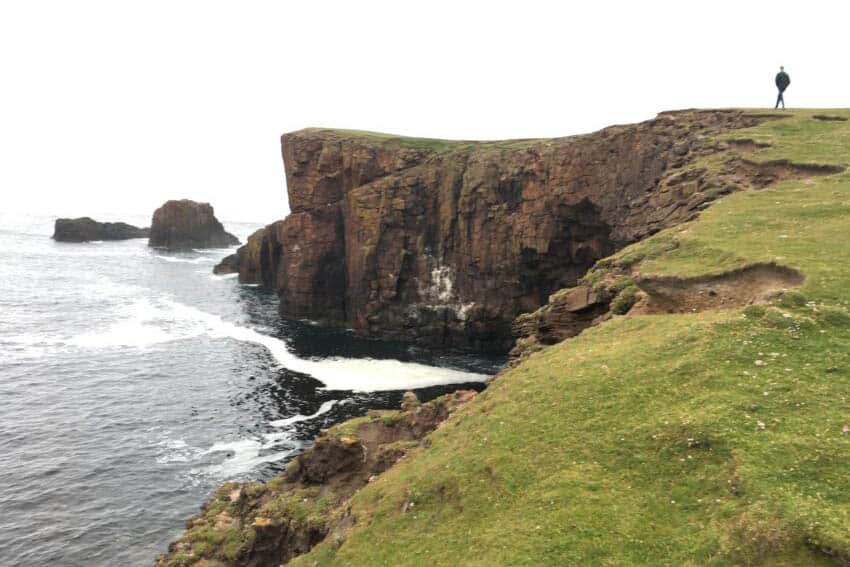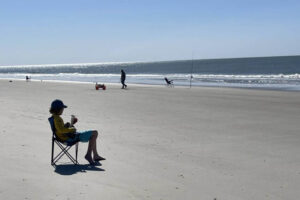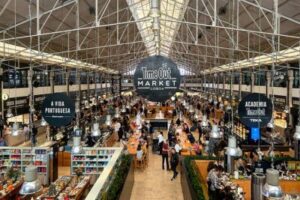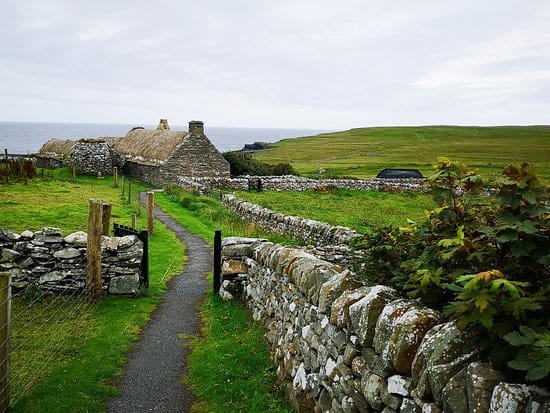
Shetland, the UK’s Remotest Archipelago
By Matteo Preabianca
Reaching the Mainland — as Shetlanders called the biggest island of their archipelago — is easy but not quick.
To get a feeling for its remoteness, I decided to take the ferry from Aberdeen, the third biggest city in Scotland. 12 hours of night traveling, in very choppy waters. The following day, I woke up seeing something beautiful: the North Sea at its best.
Lerwick

Lerwick is a nice city (about 7000 inhabitants), but not as quiet as you might think. There is everything here, even a movie theatre and a very well kept museum. This is the capital and biggest town in the Shetland Islands.
All around the old city, there are old walls with cannons, once used to defend the Shetlanders from Vikings.
Part of Scotland since 1472, these far off islands are a cultural mix between Scotland and Norway. Lerwick means ‘bay of clay’ in Norn, the language related to Norwegian, Icelandic, and Faroese which used to be spoken in Shetland until the 19th century.
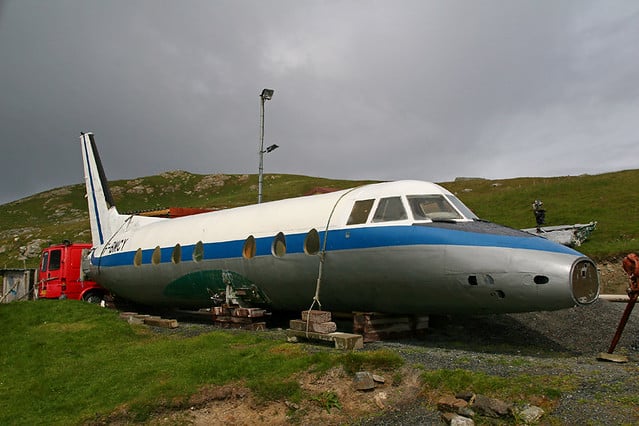
Towns with similar names are still found in southwestern Norway, as well as on the Faroe Islands.
The other biggish settlement, Scalloway, the previous capital and the second most populated city (900 inhabitants), is located on the North Atlantic coast.
Northern Lights
I came here for one reason only: the Aurora Borealis. After various calculations and research, I realized that between March 10 and 15 2020, thanks to the approach of the equinox, it would have been the right week to admire the Electric Dancer of the skies.
Thanks to the help of a local photographer, Austin Tay, who gave me some tips, I started my exploration. The best places to see them include Tingwall Valley, Weisdale Valley, Wadbister Voe and Burra.
 I went to all these places but saw no Northern Lights. But it did give me a chance to go beyond my silly reason.
I went to all these places but saw no Northern Lights. But it did give me a chance to go beyond my silly reason.
I decided to head further north, off the classic route, though from Lerwick, the northernmost point on mainland island, is just over an hour.
The Northern mainland
I passed through Brae village, which is so different from Lerwick. A few houses, maybe a hundred, overlooking the quiet bay. I kept driving past Eshaness, where there’s a historic lighthouse. I stopped exactly a few meters before the cliff.
Darkness was coming. Maybe it was time for the Northern Lights. Too much rain and wind. Full of joy, I could see by coincidence an animal that seems to hang around here often: the orca. In spite of the bad weather, two of these animals were diving in the remarkable waters.
The next day I tried again. I still traveled north, this time I went to Eela Water, Ronas Voe, and Sandness. It was a continuous succession of prairies (without trees because they don’t have an easy life here) and Shetland Ponies, the typical small, squat, and stubborn horses of the islands.
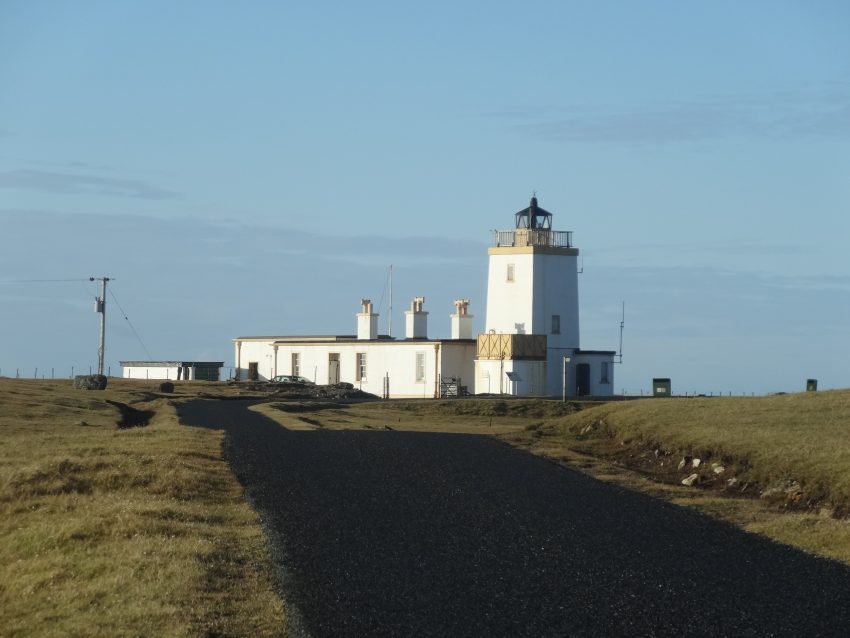
I reached North Roe, a very small village with just 13 buildings, including a primary school with its nine pupils. The roads are well paved but very small.
In fact, when a car came from the opposite direction, you had to stop by the side to let it pass.
In the small village, silence dominated all the moving natural beauty. In the small bay I met the second animal species of Shetland: the otters.
They are everywhere, but it is difficult to get close because they are very shy animals.
Much more to see
Although I didn’t get a good view of the Aurora (just a faint little green light behind the Lerwick golf course) I certainly didn’t waste my time coming here. I visited three places unique in their diversity.
St. Ninian’s Isle
A tombolo is a beach created by wave action that connects two landmasses. It is an Italian word, but not even me, being Italian, knew about it. During low tides, it can be 70 meters wide, but during high spring tides, the center can become submerged.
Walking from the A970 till the tip of the tiny island, where cattle roam freely around, is not too difficult and will take you about 15 minutes or so. From its top, you can see a good chunk of the southern part of the mainland.

Jarlshof complex
Oval-shaped Bronze Age houses, Norse longhouses, a medieval farmstead, and a 1500s laird’s house. There are impressive remains from the Bronze Age, Iron Age, Viking and medieval periods. This archaeological site is accessible from the hotel nearby, which sells the entrance tickets during the off-peak season.
The Norse were a linguistic group ancestral to modern Scandinavians. That’s why Shetland is a must-see place in Scotland because here the history, culture and language are not related to the rest of the UK but closer to Scandinavia.
Crofthouse Museum
The Crofthouse Museum is quite nice. It is an authentic and well-maintained example of a historic crofter’s house. There are some outbuildings you can see as well. It will take you at most an hour unless you stop to chat with the knowledgeable staff. Take the time to go out to see the watermill.

Up Helly Aa Festival
If you end up going to Shetland between January and March, I strongly recommend this festival. It takes place on different days in different villages during this period. It involves a torchlit procession by squads of costumed participants that culminates in the burning of a Viking galley.
Since its inception, women and girls have been excluded from participating in it. This has become a controversial issue and is the subject of ongoing debate in Shetland.
Sumburgh Head, Noss and Hermaness
These three seabird colony nature reserves in the Shetlands are easily accessible. Even if the most famous bird is the puffin, which you can only see from April, you might come across the Arctic skuas at other times.
History, nature, silence. A full cultural experience. That’s Shetland.
 Matteo Preabianca has been traveling for more than 10 years, living in several countries, including Italy, UK, Switzerland, Russia, India, USA, Australia, Mali, Mexico, and now, China, where he works as a University Lecturer.
Matteo Preabianca has been traveling for more than 10 years, living in several countries, including Italy, UK, Switzerland, Russia, India, USA, Australia, Mali, Mexico, and now, China, where he works as a University Lecturer.
- Greece Getaway: Camping Hacks for Your Next Getaway - April 25, 2024
- Products and Clothing You Might Enjoy - April 25, 2024
- Saudi Arabia Might Be Your Next Getaway Spot - April 23, 2024


